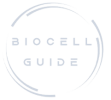What is Collagen?
Collagen is composed of protein molecules that are made up of amino acids [Glycine, Proline, Hydroxyproline, Arginine]. These amino acids have a regular arrangement in each of the three chains of these collagen subunits. Collagen provides structural support to the extracellular space of connective tissues. Due to its rigidity and resistance to stretching, it is the perfect matrix for skin, tendons, bones, and ligaments.
Collagen fibers constitute approximately 80%-90% of dry weight of the dermis in human skin and are the principal proteins providing structure, strength, and stiffness to dermal tissue. In normal adults, type I collagen accounts for approximately 80% of collagen, and type III collagen constitutes 10% of collagen in the dermis.
Collagen is the dominant fibrous protein not only in connective tissues but also in hard tissues, bone, dentin, cementum, and even the mineralizing cartilage of the epiphyseal growth plate. It comprises about 80-90% (by weight) of the organic substance in demineralized dentin and bone (1).
Types of Collagen : The human body uses
Collagen can be further divided into several groups depending on the type of structures they form. There are 28 various types of collagen that have been discovered, but by far, the most common are types I through IV, with type I comprising over 90% of the collagen in the human body.
To better understand the physiology of connective tissue, it is necessary to distinguish between the many forms of collagen, which are usually made up of fibers present in the extracellular matrix. Collagen is the most prevalent protein in the human body, with 28 different kinds.
The four most commong type of Collagen in the human body :
-Type I: the most frequent type; flexible and strong; resists stress, tension, and stretch; present in all connective tissue, including scar tissue, tendons, ligaments, bone, cornea, skin, and dentin.
-Type II: offers pressure resistance and is present in articular and hyaline cartilage of joints as well as intervertebral discs.
-Type III: the principal component of reticular fibers, which are commonly found in organs such as skin and blood vessels, offers a flexible meshwork for cellular support. It is also plentiful during the early phases of wound healing and aids in the production of granulation tissue.
-Type IV: meshwork that provides support and attachment to the underlying extracellular matrix forms the basal lamina of the basement membrane, an essential component of the kidneys, inner ear, and lens of the eye.
What is Collagen’s role in the body?
Collagen is a protein that serves as one of the main building blocks for your bones, skin, hair, muscles, tendons, and ligaments. “Collagen is what keeps skin from sagging, and is composed of a scaffold structure which provides rigidity and firmness to skin to maintain a youthful look.”
Your body naturally makes collagen, but this production decreases with age.
“Starting in our mid-20s, we slowly begin to lose collagen,” Dr. Aivaz says. “For women, we can lose up to 30% of our collagen production in the first 5 years of menopause.”
Because we lose collagen as we age, many are using collagen supplements as part of an anti-aging beauty regimen.
How Collagen in the Human Body functions
The collagen networks form a highly organized, three-dimensional structure that can hold other ingredients. Biomaterials are expected to replace the natural extracellular matrix, which is made of collagen, as cell scaffolds. The composition and properties of biomaterials used as scaffolds in tissue engineering have a big impact on the growth of new tissues and the way collagen is made (3).
Work Cited :
Varani, J. “Decreased Collagen Production in Chronologically Aged Skin”. https://www.ncbi.nlm.nih.gov/pmc/articles/PMC1606623/
Cen, L. “Collagen Tissue Engineering: Development of Novel Biomaterials and Applications”. https://www.nature.com/articles/pr2008100
Wiesmann, H P. “Aspects of collagen mineralization in hard tissue formation”. https://pubmed.ncbi.nlm.nih.gov/15598468/#:~:text=Collagen%20is%20the%20dominant%20fibrous,in%20demineralized%20dentin%20and%20bone.
Nezwek, T A. “Physiology, Connective Tissue”. https://www.ncbi.nlm.nih.gov/books/NBK542226/
Wu, M. “Biochemistry, Collagen Synthesis”. https://www.ncbi.nlm.nih.gov/books/NBK507709/#:~:text=The%20process%20of%20collagen%20synthesis,occurs%20both%20intracellularly%20and%20extracellularly.
Metcalf, A D. “Tissue engineering of replacement skin: the crossroads of biomaterials, wound healing, embryonic development, stem cells and regeneration
“. https://royalsocietypublishing.org/doi/10.1098/rsif.2006.0179



